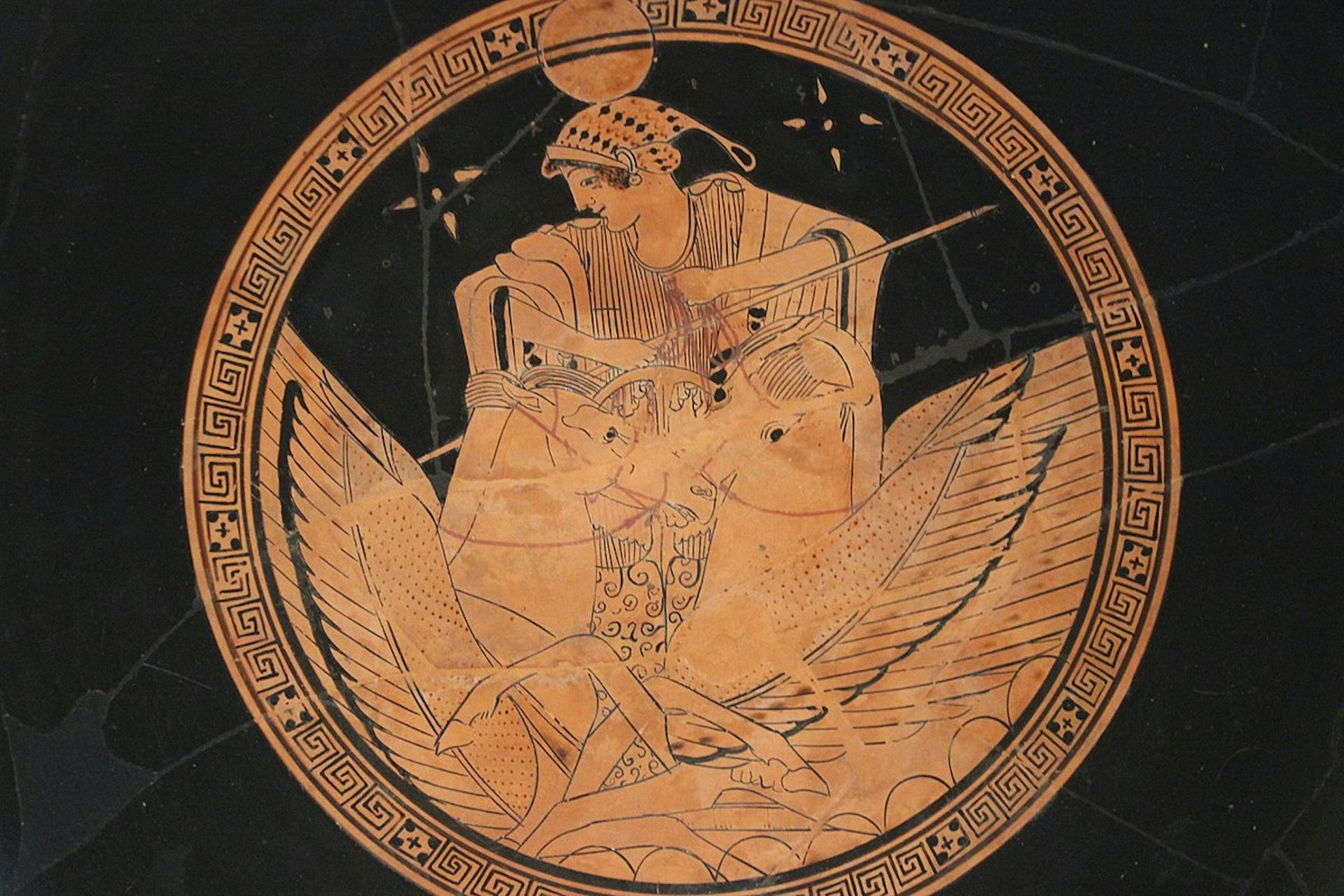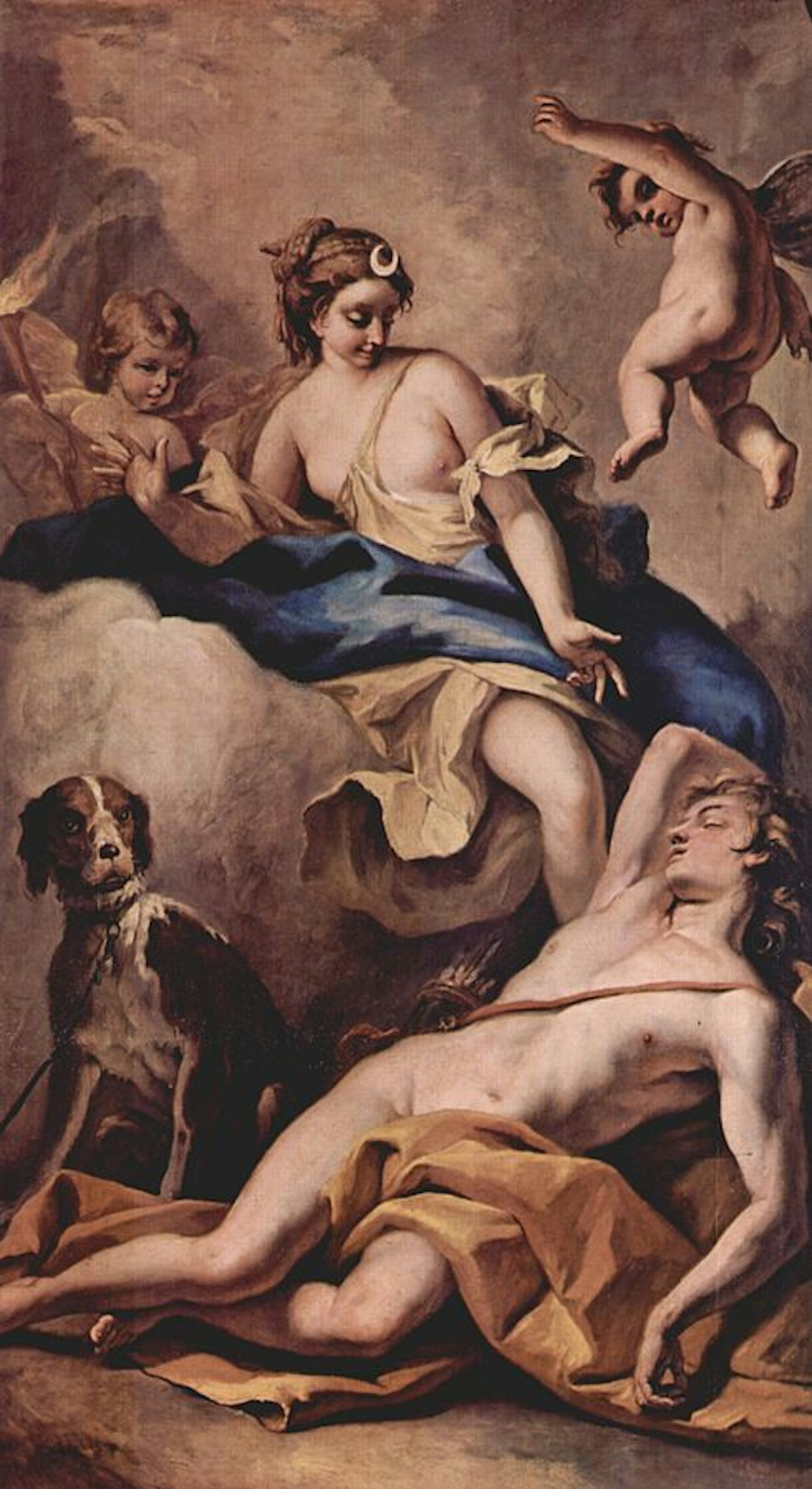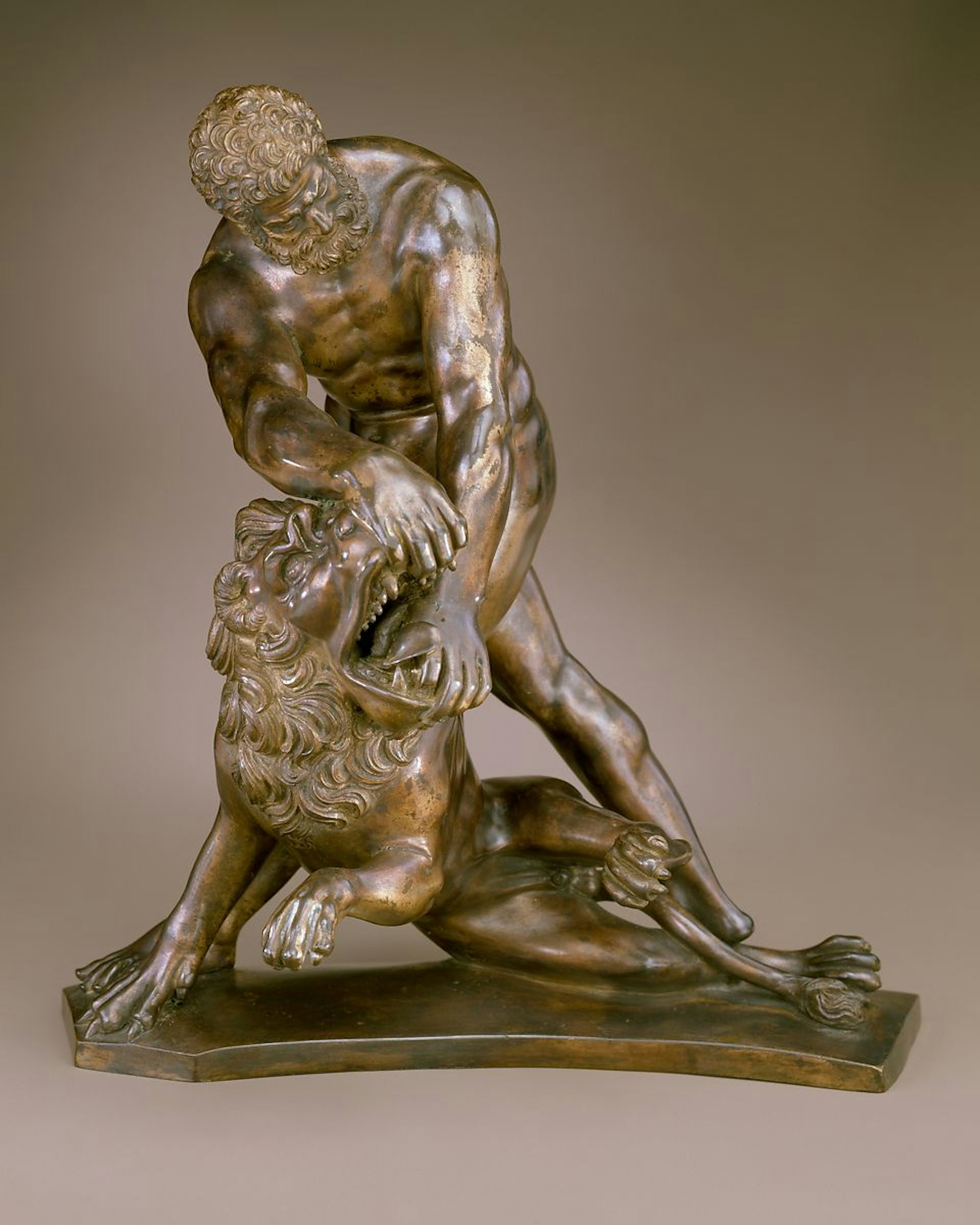Selene
Overview
Selene, daughter of the Titans Hyperion and Theia, was the personification of the moon. Her brother Helios shone as the sun, while her sister Eos was the goddess of the dawn. Though Selene had many consorts, the most famous of them was Endymion, a handsome young mortal. When Selene spied him sleeping in a cave, she immediately fell in love and asked Zeus to extend his sleep for all eternity.
Like most of the Titans, Selene was rarely worshipped in the ancient world. Eventually, she became identified with Artemis, goddess of the wilderness, who was sometimes associated with the moon. (Similarly, Selene’s brother Helios came to be identified with Artemis’ brother Apollo.)
Etymology
The name “Selene” (Greek Σελήνη, translit. Selḗnē) was also the ancient Greek word meaning “moon.” The etymology is uncertain, but it appears to be related to the Greek word σέλας (sélas, “light”) and the Proto-Indo-European word *l(o)uksneh₂- (“moon”), from which we also derive the Latin word for moon, luna.[1]
Pronunciation
English
Greek
Selene Σελήνη (translit. Selḗnē) Phonetic
IPA
[si-LEE-nee] /sɪˈli ni/
Alternate Names
Selene was often identified with other goddesses, including Men (also spelled Mene), the divine personification of the lunar month; Bendis, a goddess of Thracian origin; Hecate, a goddess of witchcraft; and (especially in later antiquity) Artemis, the goddess of hunting and wild things. Like Artemis, Selene was sometimes called Phoebe, a name that means “bright one.”
Selene’s Roman counterpart was called Luna (from the Latin word meaning “moon”).
Titles and Epithets
Many of Selene’s epithets—including αἴγλη (aíglē, “gleaming”), πασιφάη (pasipháē, “all-shining”), and τανυσίπτερος (tanysípteros, “long-winged”)—reflected her lunar qualities and other distinctive attributes.
But Selene was also called by many generic epithets that were used for other goddesses as well, including εὐπλοκάμος (euplokámos, “she of the beautiful hair”), λευκωλένος (leukōlénos, “white-armed”), γλαυκῶπις (glaukôpis, “gray-eyed, bright-eyed,” an epithet most commonly associated with Athena), and κυανῶπις (kyanôpis, “dark-eyed,” essentially the opposite of glaukôpis).
Attributes
Functions
Selene personified the moon and was one of the Greek goddesses of the night. But unlike other night goddesses—like Nyx, Hecate, and sometimes even Artemis—Selene represented the moon itself. In other words, Selene was the moon (similar to the Roman Luna or even the Norse Máni).
As the moon, Selene occupied an important place in popular religion.[2] She was often associated with cycles of growth and agriculture, female menstruation, and mysterious diseases like epilepsy and demonic possession. The phases of the moon—especially the new moon and the full moon—played a central role in the ancient Greeks’ understanding of time and agriculture.
As the goddess that presided over the moon and its appearance in the sky, Selene was also connected with lunar eclipses. The Greeks (like many other ancient peoples) were notoriously terrified of eclipses, viewing them as signs of the gods’ displeasure.[3]
Characteristics and Iconography
Though Selene, as the moon, was undeniably important to the ancient Greeks, there are very few descriptions of her in literature. Those that do exist are somewhat generic (like the previously mentioned epithets).
Perhaps the most colorful ancient description of Selene comes from Homeric Hymn 32 (the Homeric Hymn to Selene).[4] Here she is represented as a radiant goddess, wearing a crown and beautiful robes and riding a horse-drawn chariot across the night sky:
From her immortal head a radiance is shown from heaven and embraces earth; and great is the beauty that ariseth from her shining light. The air, unlit before, glows with the light of her golden crown, and her rays beam clear, whensoever bright Selene having bathed her lovely body in the waters of Ocean, and donned her far-gleaming raiment, and yoked her strong-necked, shining team, drives on her long-maned horses at full speed, at eventime in the mid-month: then her great orbit is full and then her beams shine brightest as she increases. So she is a sure token and a sign to mortal men.[5]
Selene’s moon chariot—similar to the sun chariot of her brother Helios and the dawn chariot of her sister Eos—was probably her most distinctive and consistent attribute. Depending on the author, the chariot was either silver,[6] snow white,[7] or gold.[8]
Selene began appearing in the visual arts around the early fifth century BCE. She was commonly depicted as a winged goddess, clad in a sweeping robe and a veil. Often she was shown in a chariot drawn by a team of horses or oxen, but other times there was no chariot, and Selene would instead appear on the back of a horse or mule. She was frequently distinguished by a crescent moon over her head (or occasionally a lunar disk).[9]

Attic red-figure kylix showing Selene riding the chariot of the moon, drawn by two winged horses. Attributes to the Byrgos Painter, ca. 500–450 BCE. Altes Museum, Berlin, Germany.
Miguel Hermosa-CuestaCC BY-SA 4.0Family
Family Tree
Mythology
Endymion
Selene is probably most famous for her love of Endymion, a handsome young man from Asia Minor (though some said that he was from Elis).
There are a few different versions of the myth. In the most familiar account, Selene first saw the beautiful Endymion as he lay sleeping in a cave on Mount Latmus. She fell madly in love with him and asked Zeus to let him stay asleep forever, remaining eternally young and beautiful (in some traditions, it was Endymion himself who requested this unending sleep). Her request granted, Selene visited him regularly; some sources even reported that they had children together (see above).[27]

Selene and Endymion by Sebastiano Ricci (1713). Chiswick House, London, UK.
Wikimedia CommonsPublic DomainIn other versions, Endymion was actually taken to Mount Olympus. But while there, he committed some transgression (usually, he was said to have fallen in love with Zeus’ wife Hera). As punishment, he was either thrown out of Olympus or cast into an eternal sleep. Interestingly, this version of the myth does not involve Selene.[28]
Another version is known only from Lucian, a satirical writer from the second century CE. According to Lucian, Selene had a rival for Endymion’s love named Myia. The talkative Myia would sit with Endymion as he slept his eternal sleep, chattering endlessly—so much so that Endymion eventually woke up. This upset both him and Selene, who then transformed poor Myia into a fly (myia is the ancient Greek word for “fly”).[29]
The Nemean Lion
Selene played a role in some versions of the myth of the Nemean Lion, a ferocious and invulnerable beast slain by Heracles as the first of his Twelve Labors. Though Hesiod made the Nemean Lion the child of Echidna, other authors wrote that Selene gave birth to it or brought it up at Hera’s request. Some even said that the Nemean Lion, as the offspring of Selene, had originally fallen from the moon.[30]

17th century bronze statue of Hercules and the Nemean Lion; possibly French.
Metropolitan Museum of ArtPublic DomainTyphoeus
Another myth describes how Selene held her own against the monster Typhoeus when he attacked the gods. According to Nonnus, Typhoeus battled Selene by chucking bulls at her, then violently rushing her. Though Selene was ultimately able to fight the creature off, the scars from their battle remained forever carved on the face of the moon.[31]
Ampelus
Ampelus was a handsome young male satyr and the first love of the god Dionysus. Nonnus describes how, as Ampelus was riding a bull, he made the mistake of comparing himself to Selene. Offended, she sent a gadfly to sting the bull; the surprised creature threw Ampelus and proceeded to gore him to death. Grapevines then rose from Ampelus’ corpse, from which the heartbroken Dionysus made wine for the first time.[32]
Worship
Selene was rarely worshipped, at least in earlier periods of ancient Greek history. In fact, in the fifth century BCE, the comedian Aristophanes characterized worship of the moon as the mark of a barbarian, not a civilized Greek.[33]
But the Greek cult of Selene grew more and more prevalent towards the end of the Hellenistic period (323–31 BCE). Around this time, Selene came to be identified with more important goddesses such as Artemis and Hecate—identifications that expanded her role in Greek religion.
Only a handful of religious centers of Selene are known from the ancient world. The goddess had one temple that was also an oracle near Thalamae in Laconia.[34] She also had a sacred statue (which stood alongside one of her brother Helios) in the public market of Elis.[35]
Pop Culture
Though Selene almost never appears in modern adaptations of Greek mythology, she is nonetheless present in pop culture as the personification of the moon. The name Selene is also quite popular in the English-speaking world.